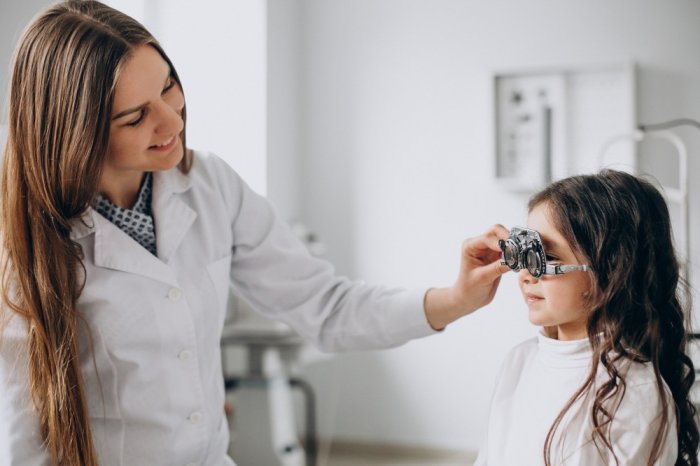Will optometry still exist in its current form in 20-30 years? Will optometry have a part, and if so, how will it be played? Technological progress is disruptive by its very nature: in the past, it has caused drastic shifts in the kinds of employment that are accessible and in demand. We may live in a time of the fastest technical development in history. So, the question is whether human-performed operations, the one performed by an optometrist, have a future.

Table of Contents
Lack of Optometrists in the World
Currently, there is a shocking lack of optometrists in the world. The WHO estimates that there is a need for 14 million more optometry professionals than there are now (just 331k). There may be a few reasons for that:
Challenges in Education
The difficulties associated with obtaining the requisite credentials to become an optometrist are another factor causing a scarcity of healthcare workers. Education takes a lot of time, and what is even more important, financial resources. In some countries education for optometrists is not accessible at all.
Growing Healthcare Needs and Aging Populations
Years ago, healthcare personnel shortages started to emerge when the number of older persons began to outweigh younger generations. Older persons typically require more medical care than younger people, including demands for eye care services and more general health concerns. There must thus be more healthcare resources available to a population with a higher average age.
COVID-19
The stress of caring for COVID-19 patients and following stringent guidelines has been felt by employees in a variety of healthcare institutions. It is hardly surprising that many healthcare professionals have changed occupations due to the stress and strain caused by this pandemic.
Stress Due to Lack of Recources
During times of scarcity, like in case of the shortage of optometrists, working conditions for employees are frequently hazardous, demanding, and nearly difficult to sustain. As a result, many workers in the healthcare industry have quit their jobs owing to stress brought on by staffing shortages.
What is the way out? Automation of eye care practices with the help of AI for optometry will make diagnostics more accurate, streamlined, and available.
#3 What Tests Should be Performed by Optometrists
If you think, that there are problems with your vision, you might go see an optometrist. Optometrists (ODs) perform a variety of tests during a thorough eye examination to understand the severity of your condition and choose the right correction methods. What tests are the most important?
TEST FOR VISUAL ACUITY
You will read letters from a sign that is placed a certain distance away from you, using one eye at a time. Your optometrist will use your responses to calculate how close each eye’s vision is to normal 20/20 vision.
RETINOSCOPY
The optometrist can roughly find out your ideal lens prescription using retinoscopy. The ophthalmologist switches out different lenses in front of your eyes while you look through the phoropter. You fix your attention on a standout item in front of you. Your eye doctor shines a light into your eyes while using various lenses to observe how the light affects your eyes.
TESTING KERATOMETRY
The cornea, the eye’s outer layer, is measured using this technique to determine its contour. You look into specialized equipment as you undergo a keratometry test. Your eye doctor adjusts the gadget to correspond with your eye. The optometrist then interprets the machine’s measurements, which show the shape of your cornea.
MEASURING INTRAOCULAR PRESSURE
Your open eye receives a brief airburst from the device used to check for glaucoma. You are momentarily surprised by the air puff, and as a result, your eye closes. Based on your response and your eye’s resistance to the air puff’s pressure, the machine calculates the pressure in your eyes.
PERIPHERAL VISUAL FIELD TEST
There are several kinds of peripheral visual field exams:
- Robotic perimetry. You fix your gaze on a region in the middle of a specific device. You hit a button every time a light flashes in your line of sight.
- Screening for tangents. You concentrate on a target in the screen’s middle. Your eye doctor moves things in and out of your line of vision as you give feedback.
- Visual field test for confrontation. The eye doctor sits across from you and flits their hand in and out of view.
An optometrist can measure your visual field size and spot any blind spots in your peripheral vision with the help of each test.
- The most accurate diagnostic method.
AI in Optometry for OCT Scans Analysis
As we advance into the twenty-first century, the discipline of optometry will increasingly shift toward the junction of disruptive technologies, particularly
ODs nowadays need to comprehend the rise of AI in optometry and healthcare and use it effectively. Indeed, as jobs shift, the workforce in optometry will alter. As optometrists shift farther toward “data analysis” and away from “data collecting,” new opportunities in eye care will arise thanks to the capacity to employ digital thinking processes, cutting-edge technology, and critical thinking.
AI is good at what it does and weak at what it has not been trained to comprehend (such as age ranges or congenital optic nerve defects that are not in the database). That is why, rather than the rising concern that ODs would lose their employment, the focus should be on an OD’s capacity to use AI effectively. AI gives optometrists the chance to help the world’s healthcare industry by improving patient outcomes.




